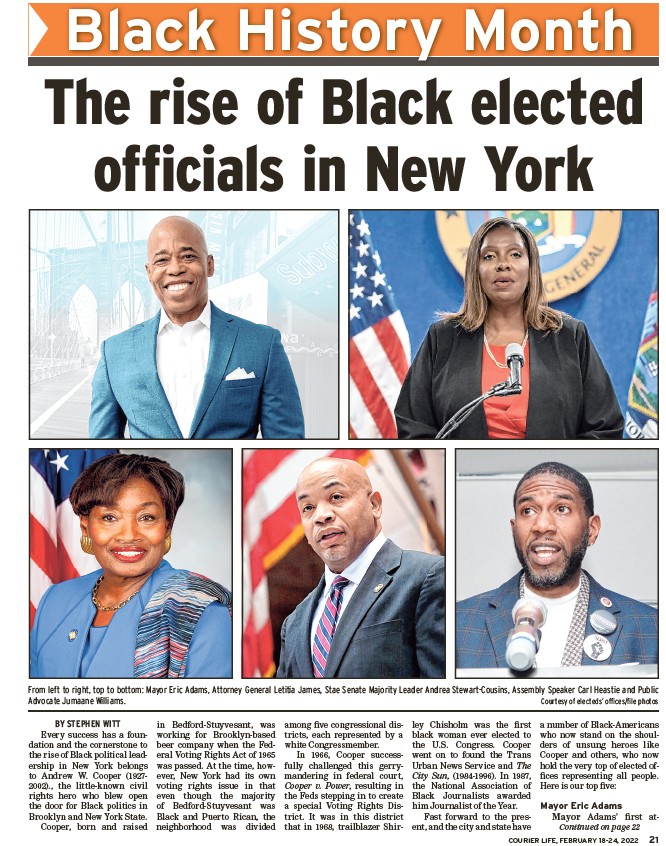
Black History Month
The rise of Black elected
offi cials in New York
From left to right, top to bottom: Mayor Eric Adams, Attorney General Letitia James, Stae Senate Majority Leader Andrea Stewart-Cousins, Assembly Speaker Carl Heastie and Public
Advocate Jumaane Williams. Courtesy of electeds’ offi ces/fi le photos
COURIER LIFE, FEBRUARY 18-24, 2022 21
BY STEPHEN WITT
Every success has a foundation
and the cornerstone to
the rise of Black political leadership
in New York belongs
to Andrew W. Cooper (1927-
2002)., the little-known civil
rights hero who blew open
the door for Black politics in
Brooklyn and New York State.
Cooper, born and raised
in Bedford-Stuyvesant, was
working for Brooklyn-based
beer company when the Federal
Voting Rights Act of 1965
was passed. At the time, however,
New York had its own
voting rights issue in that
even though the majority
of Bedford-Stuyvesant was
Black and Puerto Rican, the
neighborhood was divided
among fi ve congressional districts,
each represented by a
white Congressmember.
In 1966, Cooper successfully
challenged this gerrymandering
in federal court,
Cooper v. Power, resulting in
the Feds stepping in to create
a special Voting Rights District.
It was in this district
that in 1968, trailblazer Shirley
Chisholm was the fi rst
black woman ever elected to
the U.S. Congress. Cooper
went on to found the Trans
Urban News Service and The
City Sun, (1984-1996). In 1987,
the National Association of
Black Journalists awarded
him Journalist of the Year.
Fast forward to the present,
and the city and state have
a number of Black-Americans
who now stand on the shoulders
of unsung heroes like
Cooper and others, who now
hold the very top of elected offi
ces representing all people.
Here is our top fi ve:
Mayor Eric Adams
Mayor Adams’ fi rst at-
Continued on page 22